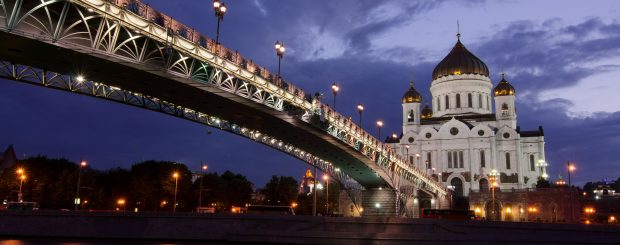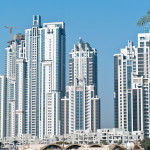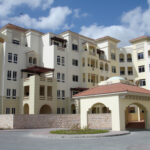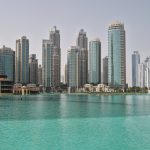Dubai vs. Moscow
The Recent Birth of Dubai
Arriving in Dubai, you’ll immediately notice the “can-do” attitude displayed by residents and citizens. While the sun and sand lifestyle may suggest languid movement, in reality, business decisions are made quickly in Dubai.
Unabashedly modern and with an eye towards the future, Dubai is a growing metropolis set to host Expo 2020.
Dubai was historically an important trading hub linking east and west. Pearl diving and fishing were important to the economy. Dubai Creek, bordered by Deira on one side and the historic Bastakia neighborhood on the other, served as a natural gateway for shipping activity.
The city experienced modest population growth until the discovery of oil in 1966.
After the discovery of oil, Dubai joined the federation of six, then seven emirates, and the United Arab Emirates were created. Dubai gained wealth and prominence under the rule of Sheikh Zayed bin Sultan al Nahyan.
Today, the purposeful leadership has created an environment open to receiving international tourists –that also acts as a business hub for people around the world.
Embracing History in Moscow
In comparison to Dubai, Moscow is a city that has earned its place in history as home to two great Empires. Moscow was first built as a fort in the late 12th century, and later gained prominence in the 14th century as the base for the Russian Orthodox Church.
While Dubai is the largest city in the United Arab Emirates, it isn’t the capital city. Moscow is the capital city of Russia.
The medieval Russian empire saw the growth of the city beyond the Kremlin, including The Red Square and St. Basil’s Cathedral. After the 1917 Russian Revolution, Communist Russia also left its mark on Moscow.
In Moscow, visitors can view the Lenin Mausoleum and other remnants of the Soviet era.
Modern day Moscow hosts rock concerts and events in Red Square, and capitalists can celebrate over their purchases at GUM Department Store. This famous store has a 200-year history.
First home to retail sales, it later became GUM – a Soviet Universal Store. Today, there are designer shops in GUM, and it is a popular destination as much for its architecture as its shops.
Perhaps it is Moscow’s answer to Dubai Mall and the Burj Khalifa.
The Resident Population of Dubai Versus Moscow
The largest city in Russia, Moscow is an Eastern European cultural and political hub. With a resident population exceeding 12 million people, Moscow is a vast metropolis home to Russians (approximately 10 million) followed by Ukrainians, Tatars, Armenians, and others of Eastern European ethnicity.
Moscow is far more crowded than Dubai. You’ll find that the public transport system is older and more crowded as well.
With a current resident population of just under 2.5 million, Dubai is unusual because most residents are not nationals of the United Arab Emirates. Dubai is a city of expat residents, with the greatest number being from low-income countries like India, the Philippines, Pakistan, and Bangladesh.
There are also substantial numbers of British, European, Australian, South African, and North American expatriates in Dubai.
Around 55,000 Russian-speakers live in the United Arab Emirates, with many based in Dubai. Dubai is also an important tourist destination for Russians, and hotels routinely offer tours and assistance in Russian.
Compared to Moscow, with a population of over 12 million, Dubai offers more space and a modern atmosphere. However, Moscow has the advantage when it comes to depth and breadth of history.
Religion
Islam is the religion of the United Arab Emirates, and respect for the conservative nature of Gulf Arabs goes a long way in Dubai. For example, do try to be friendly, but don’t engage in public displays of affection or wear overly revealing clothing.
Friday is a holy day (and a the first day of the weekend) in Dubai. Alcohol consumption in public, unless in a hotel bar or restaurant, is prohibited.
The seat of the Russian Orthodox Church is in Moscow, and Orthodox Christianity is the primary religion in Russia. It is secular state, but tolerant of a diversity of religion including Islam, Buddhism, and Judaism.
Entertainment
There are many more museums, ballet performances, and artistic activities in Moscow than in Dubai. Moscow is home to the Bolshoi Theatre, after all.
However, more and more international events are being brought to Dubai, creating an increasingly cultured environment. For example, the Emirates Community Symphonic Orchestra engages musicians living in the UAE.
Moscow has an active nightlife, as does Dubai. Red Square may be host to rock concerts, but Dubai’s answer to that is Nasimi Beach concerts at Atlantis, The Palm. Live performances, up to ten a night, can be seen at MusicHall at Jumeirah Zabeel Saray in Dubai.
Hotels
Both Dubai and Moscow are fairly expensive when it comes to hotel rooms, but Dubai arguably has the advantage in terms of value for money. An average hotel in Moscow will set you back around USD 400, while you can get a 5 star hotel room for around the same in Dubai.
The level of luxury and service is generally higher in Dubai, and there is always access to a beach or pool, no matter where you stay.
Tourism
Although many people visit Moscow, Dubai has become a tourist destination in its own right. It is easy to move around Dubai, thanks to the efficient Metro system and the fact that nearly everyone speaks English. More tourists visit Dubai than Moscow (15 million versus 4 million).
Weather
The nicest time of year to visit Dubai is between October and March, when the temperature is warm (20 – 30 degrees Celsius) and it is possible to enjoy outdoor events without sweltering.
The hottest months are between June and September, when the temperature reaches about 40 degrees Celsius.
In comparison, Moscow, in its hottest months, climatically resembles a Dubai winter, with averages of 23 degrees Celsius. It rarely rains in Dubai, and it never snows.
In Moscow, winter weather dips to -10 degrees Celsius. Dubai attracts Russian tourists because it offers the perfect sunny antidote for a long, cold Muscovite winter.








